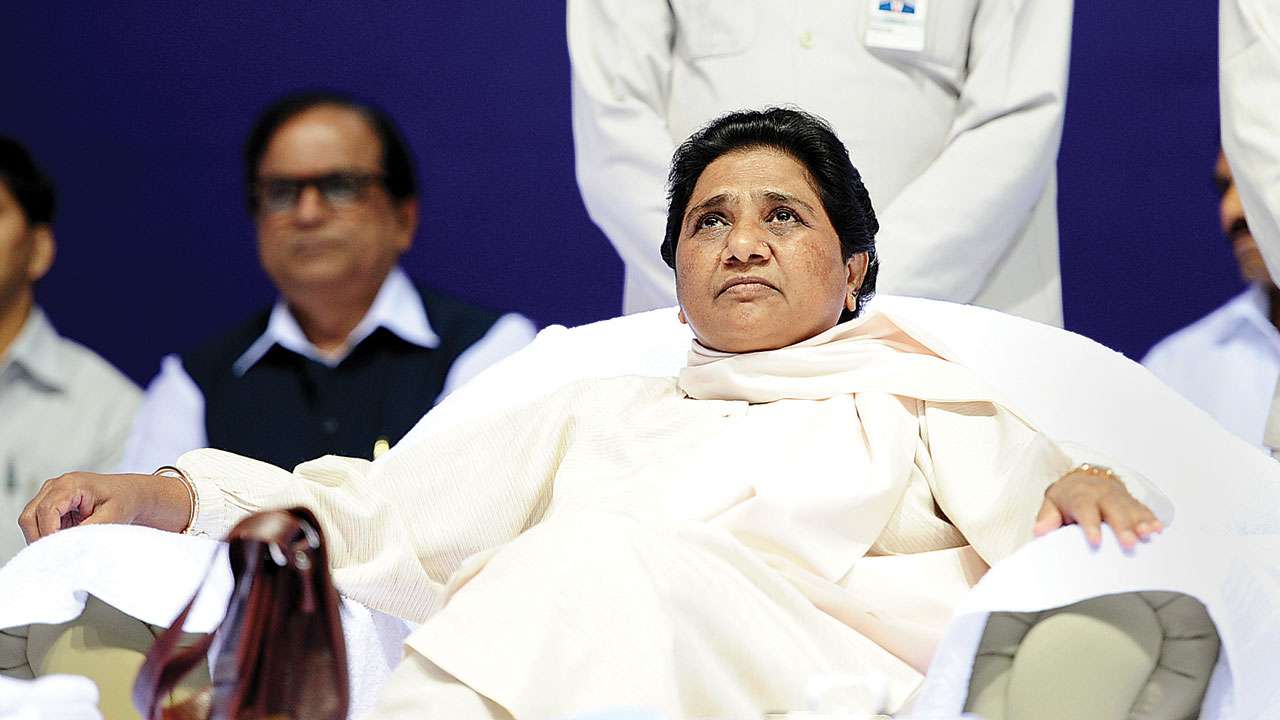
On an oppressively hot June day in Lucknow 23 years ago, events unfolded that could impact the 2019 Lok Sabha election. Samajwadi Party (SP) founder Mulayam Singh Yadav was chief minister of Uttar Pradesh. SP had 109 seats in the 425-seat Uttar Pradesh Assembly. It was supported in a tense if outwardly cordial coalition government by Kanshi Ram’s Bahujan Samaj Party (BSP) with 67 seats. Mayawati, then 39-years-old and BSP’s general secretary, was a rising star of the party.
On the evening of June 2, 1995, fearing that BSP would withdraw support for the SP-led coalition government, several SP MLAs and workers attacked a group of BSP MLAs closeted in a strategy meeting in the Lucknow state guest house.
The SP leaders’ aim was to break the BSP party by intimidating its MLAs. What followed exposed the violent DNA that characterises the SP even today.
As a leading daily reported on June 3, 1995, in an article titled Mulayam’s men attack BSP legislators’ meet: “The Samajwadi Party workers, armed with rifles and weapons, barged into a meeting room of the BSP workers…and assaulted the BSP legislators, ‘kidnapping’ some of them. Senior BSP leaders, including Mayawati, slipped into a suite reserved for her in the guest house. The Lucknow SSP, OP Singh, as well as his men, were a mute witness as the SP men snapped the telephone and power lines…and started beating (the BSP MLAs) with lathis. About 300 SP miscreants were led by over a dozen party MLAs, mostly with a criminal background.”
The impact on Uttar Pradesh politics was immediate and dramatic. Motilal Vora, the longtime Congress loyalist (and currently in the news as one of those on bail in the National Herald case), was governor of Uttar Pradesh. Acting on Prime Minister Narasimha Rao’s advice, Vora promptly sacked Mulayam’s government on June 3.
The chief minister was not given an opportunity to prove his majority on the floor of the assembly. In an era bereft of television, social media and PIL activists, the Congress action went unchallenged.
But the Narasimha Rao government was in for a surprise. Within hours of Mulayam’s sacking, Mayawati tied up with the BJP and Janata Dal to extend outside support. She was sworn in as chief minister of Uttar Pradesh the same evening.
The ensuing decades-long enmity between the BSP and SP ensured that elections in Uttar Pradesh would henceforth be multi-cornered. The decline of the Congress, which had governed Uttar Pradesh for most of the period from 1950 to 1989, but never after 1989, coincided with the rise of Mayawati and the growing electoral importance of the Dalit vote.
Today Mayawati could prove the biggest obstacle for Congress president Rahul Gandhi in his bid to lead the anti-Narendra Modi mahagathbandhan.
Mayawati takes slights to heart. It took 23 years and an electoral wipeout of the BSP in the 2014 Lok Sabha election, for Mayawati to again collaborate with the SP’s new leadership under Akhilesh Yadav who was 18-years-old when the Lucknow state guest house attack took place.
Mayawati declared at her press conference with Akhilesh after formalising the BSP-SP pact in Uttar Pradesh that BSP would never support the Congress in the state or nationally. Mayawati, not Akhilesh, vetoed inclusion of the Congress in the 2019 UP gathbandhan.
Priyanka Gandhi-Vadra’s entry into frontline politics in Uttar Pradesh complicates matters. The battle between Mayawati, guarding her turf in Uttar Pradesh, and Priyanka, seeking to re-establish Congress in the state, could lead to unintended consequences for both.
Sterner tests meanwhile await Mayawati at the national level. Trinamool Congress leader Mamata Banerjee has thrown her hat into the mahagathbandhan ring. Meanwhile, the YSRCP’s Jaganmohan Reddy, TRS’s K Chandrashekar Rao and BJD’s Naveen Patnaik are manoeuvring to form a non-BJP, non-Congress front.
As Opposition leaders jockey for position, the Congress may be left with the task of being an anti-Modi choreographer, not a principal actor. That task could come down to a contest between Mayawati and Mamata. With each likely to win between 25 and 30 Lok Sabha seats in 2019, they will need to attract the non-BJP, non-Congress Third Front to join them in a coalition government and seek Congress support from within or outside.
Mayawati has a record as a tough administrator, but her government was beset with accusations of corruption, though none have been proved. Mamata too is under a cloud in the Saradha and Rosy Blue probes. Rahul Gandhi could thus end up as queen-maker.
With around 100 seats in 2019, the Congress will be the second largest party after the BJP. Rahul will have to put his prime ministerial ambitions on hold while he decides who between Mayawati and Mamata poses the least potent long-term to threat to the Congress.
Watching this drama unfold, Modi and his Svengali Amit Shah will be doing some plotting of their own. As the events of June 3, 1995, demonstrated, the BJP and BSP have done business together. Mayawati is as unpredictable as Modi is imperturbable. Uttar Pradesh lifted him to power in 2014. Five years later, while the 10 per cent quota for economically weaker sections (EWS) may help the BJP arrest the alienation of UP’s upper castes, the Mayawati-Akhilesh gathbandhan could determine his future.
The writer is an author and publisher